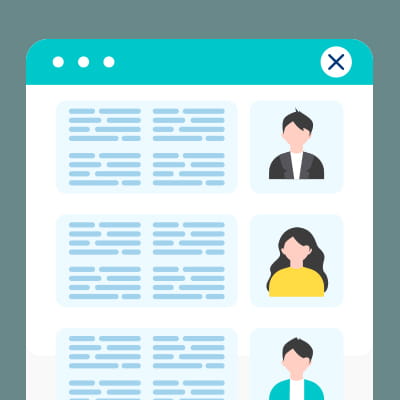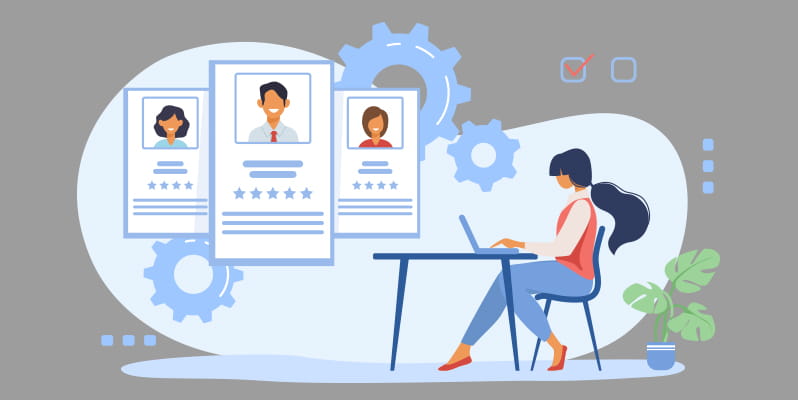A good onboarding process is not just important for making sure a new employee is ready to work straight away. It’s critical for their retention and overall performance for the duration of their employment.
Basically, it involves familiarising new employees with the organisation’s environment and culture.We take a look at exactly what employee onboarding in Singapore is, how it can benefit your company, and what the entire process could look like for you.
What is employee onboarding and how is it different to employee orientation?

Employee onboarding is the informal or formal process of introducing a new staff member to their department and preparing them for optimum productivity as soon as possible. The knowledge and tools made available to the new employee are usually specific to their role and responsibilities.
On the other (and often confused with side) is employee orientation, which is more about initiating the new staff member in the ways of company-wide culture, processes, and goals.
So, for example, in employee onboarding, the new staff member might be told that they must get back to a client on the same day or sooner from an enquiry. However, in the employee orientation, they’d be told about the company’s overall ethos of superior client service.
By keeping these two processes separated, you can ensure new employees are prepped on the company-wide mission before you explain the finer, process orientated detail. That way, you can ensure your new staff member has much better clarity about their role within the organisation as a whole.
Related Read: Why every company needs an employee handbook »
Who should look after the employee onboarding process?

22% of companies do not have any formal employee onboarding process — so it’s little wonder that things can be a little haphazard, even with companies that do have some onboarding processes.
It’s common to hear, for example, that the IT department doesn’t even know about a new employee until the day they’ve started. Scrambling ensues, and hurried communications flutter between departments to get things sorted.
For that reason, we’d recommend having a single Human Resources (HR) member take care of the entire process. You can create an onboarding checklist (which we’ll talk about soon), to make sure everything is checked off. That HR team member will also probably want to work closely with an IT team member to facilitate the technical side of things.
How long should the employee onboarding process take?

It’s not uncommon for an employee onboarding process to take less than a week or even just a single day. In our opinion, this is inadequate, as you are essentially asking your new employees to fend for themselves without giving them the right tools or framework for success.
Top performing organisations now look outside the scope of this single day or single week mentality and look at employee orientation as an opportunity for continued learning and growth.
Try to look at the onboarding process as a minimum of one month, then with frequent (monthly or quarterly) catch-ups after that. That investment in time will pay dividends — 77% of employees that had a robust, formal onboarding process hit their first performance goal/s.
Related Read : Keep employees happy working from home»
What are the steps for successful employee onboarding?
Below is a simplified checklist to help you with a successful employee onboarding process. Checklists are both simple and explicit, so if one HR person is sick or absent, another team member can take over.
Before the first day of work commencement
- Prepare paperwork such as basic contact info, bank details, non-disclosure agreements, etc.
- Submit paperwork to relevant departments for approval.
- Assign a mentor or manager to the new staff member
- Discuss with the mentor or manager the employee’s role, goals, and appropriate projects to begin with.
- Prepare the employees workstation with relevant tools, e.g. chairs, computer office equipment. You may want to include company brand merchandise to help them feel welcome.
- Create a list of tools they will need to be immediately operational, e.g. Wi-Fi password, staff contact lists, etc.
- Generate company email, phone number, or social media accounts, if required.
- Provide name cards to the employees on the first day, especially in a position that requires one.
- Give required reading. Make sure the new employee has all the info and tricks up their sleeve to mesh in well. E.g. their department may have some in-house acronyms that they will need to know.
- Inform the new employee about their pay and benefits package, when they will be paid, vacation time, etc.
- Provide a detailed job description and specific lists of responsibilities to help the new employee prepare.
On the first day of the onboarding process
- Clear your schedule so that when the employee arrives, you have time dedicated to welcoming them.
- Introduce them to their new co-workers in their department. Tell the established staff who they are and why you hired them to help break the ice.
- Tour the new employee around the office, e.g. the kitchen, reception, bathroom, where their managers sit, etc.
- Assign any further training material to the employee.
- Outline your expectations for the new staff member, e.g. knowledge and abilities required to succeed in their roles, department values, and general processes.
- Go over their daily routine, e.g. where to park, when they are expected in the office each morning, etc.
- If you are not the mentor or manager, introduce the new employee to them.
- Take your new employees out for coffee or lunch to make them feel welcome.
In the first week
- Assign their first project. Make sure it is meaningful and achievable.
- Upon completion, go over that project to approve it.
- Make a plan for next month’s expectations based on S.M.A.R.T. targets, goals, etc.
- Have the employee go over all of their HR-related paperwork to ensure its accuracy.
In the first month
- Schedule a meeting to address issues and concerns for both you and the new employee. Talk about broader long-term goals for both the company and the new employee.
- Give any personal or professional development reading/viewing you think they might benefit from.
Conclusion
We hope that we’ve made clear both the benefits and overall structure of a sound employee onboarding process. Once implemented, it will only get better with each iteration as you look for areas in which to improve.
It need not be a complex task either — if you have any questions about how to find a trustworthy partner to help build your new employee onboarding processes, please do contact us — it’s both our job and pleasure to assist.
Effective onboarding is a key strategy to staff retention
Reduce Quick Turnover and have the best employee onboarding process.

Rikvin’s content team includes in-house and freelance writers across the globe who contribute informative and trending articles to guide aspiring entrepreneurs in taking their business to the next level in Asia.


